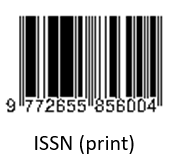Writer Identification Based on Hand Writing using Artificial Neural Network
(1) Sanata Dharma University
(*) Corresponding Author
Abstract
Humans are social beings who depend on social interaction. Social interaction that is often used is communication. Communication is one of the bridges to connect social relations between humans. Communication can be delivered in two ways, namely verbal or nonverbal. Handwriting is an example of nonverbal communication using paper and writing utensils. Each individual's writing has its own uniqueness so that handwriting often becomes the character or characteristic of the author. The handwriting pattern usually becomes a character for the writer so that people who recognize the writing will easily guess the ownership of the related handwriting. However, handwriting is often used by irresponsible people in the form of handwriting falsification. The acts of writing falcification often occur in the workplace or even in the field of education. This is one of the driving factors for creating a reliable system in tracking someone's handwriting based on their ownership.
In this study, we will discuss the identification of a person's handwriting based on their ownership. The output of this research is in the form of ID from the author and accuracy in the form of percentage of system reliability in identifying. The results of this study are expected to have a good impact on all parties, in order to minimize plagiarism. Identification of handwriting to be built consists of two main processes, namely the training phase and the testing phase. At the training stage, the handwritten image is subjected to several processes, namely threshold, wavelet conversion, and then will be trained using the Backpropagation Artificial Neural Network. In the testing phase, the process is the same as in the training phase, but at the end of the process, a comparison will be made between the image data that has been stored during training with a comparison image.
Backpropagation ANN can work optimally if it is trained using input data that has determined the size, learning rate, parameters, and the number of nodes on the network. It is expected that the offered method can work optimally so that it produces an accurate percentage in order to minimize handwriting falcification.
Full Text:
PDFReferences
M. Sutajha, M. Sandeep, C. Aiswarya and B. Mounika, "Hand Writing Recognition System Based on Neural Network," International Journal on Innovative Technology and Exploring Engineering (IJITEE), vol. 9, no. 1, pp. 4977-4980, 2019.
R. Ahuja and L. Duhan, "Optimized Multi Model Biometric Based Human Authentication Using Deep Neural Network," International Journal of Recent Technology and Engineering (IJRTE), vol. 8, no. 3, pp. 280-290, 2019.
P. B. Nair, A. M. Johnson, A. M. Alex and A. Sebastian, "Android App for Handwriting Analysis Using Deep Learning," Journal of Communication Engineering and Its Innovations, vol. 5, no. 3, pp. 16-21, 2019.
S. Aqab and M. U. Tariq, "Handwriting Recognition using Artificial Intelligence Neural Network and Image Processing," International Journal of Advanced Computer and Application (IJACSA), vol. 11, no. 7, pp. 137-146, 2020.
P. G. Patil and R. S. Hegadi, "Offline Handwritten Signature Classification Using Wavelet and SUpport Vector Machines," International Journal of Engineering Science and Innovative Technology (IJEAT), vol. 2, no. 3, pp. 573-589, 2013.
P. Divyasri, K. Depti and D. S. Rao, "Signature Analysis of Centrifugal Fan Response Due to Unbalance Using Wavelet Analysis," International Journal of Advance Research in Science and Engineering, vol. 3, no. 7, pp. 205-213, 2014.
Suma'inna, "Detection of Cardiac Abnormalities Based on ECG Pattern Recognition Using Wavelet and Artificial Neural Network," Far East Journal of Mathematical Sciences, vol. 76, no. 1, pp. 111-122, 2013.
DOI: https://doi.org/10.24071/ijasst.v3i2.3920
Refbacks
- There are currently no refbacks.
Publisher : Faculty of Science and Technology
Society/Institution : Sanata Dharma University

This work is licensed under a Creative Commons Attribution 4.0 International License.











